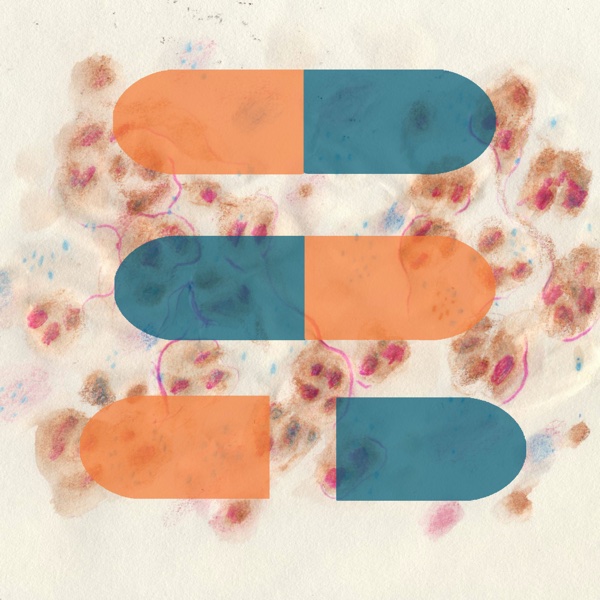The Overall Project

We have run just over 4 years, and have a lively x account @AMRinterrupted and a website https://marginalisationandthemicrobe.org. We suffered – like sexual health – from COVID-19, which led to us leaving the field, and also to a diagnosis of incurable brain cancer that hit me half way through.
To answer our original questions we did exactly 30 interviews with patients and healthcare professionals and 22 with policy makers, scientists and third sector groups, with a few more to come (e.g. at the Microbiology Conference this April in Edinburgh). Dr Kashouris also did a total of 47 interviews with patients and health care professionals in the Urinary Tract Infection field.
Taking as our focus the question of inequality, we asked:
Q1. How did staff in NHS sexual health services respond to antimicrobial resistance in sexually transmitted infections through the use of different diagnostic technologies, prescribing and other aspects of patient treatment and care?
A1. We can observe that there is an ongoing response to antimicrobial resistance, across all our infections and more. This is particularly clear now in the doxyPEP controversy, but it does not always fit with exactly what is done, or what is possible given low budgets. DoxyPEP is a brand new case study for us, where we’re looking at how a public health form, reducing antibiotic use, is clashing with the desire to reduce Sexually Transmitted Infections. Here researchers have discovered quite a lot of ‘savvy’ PrEP (HIV reducing drug) consumers are doing it, but there is also an ongoing urge to find out who has the greatest risk, and set the rate for using it at an appropriate level, to spare people needless infections and at the same time conserve antibiotics longer term. This seems to rely on the emergence of gonorrhoea vaccines and possibly also treatment. We are planning to do more work on this with LoveTank, a PrEPster charity now diversifying, as well as adding in an Antimicrobial page on their website – I’m also writing a paper on this drawing on older theoretical work on how ‘resistance’ to medicine among consumers can be divided in conceptual and practice refusal or acceptance, which I plan to send to an STS journal.
Q2. What did the response to COVID-19 as a rapid health emergency teach us about services’ capacity to respond to the slower moving AMR challenge without worsening health inequalities?
A2. The experience of COVID-19 helped people learn about a rapid change, as did their experience of Monkey Pox, but staff are now left tired and a bit disoriented from their suffering, rather than having a sense of what should do next. We note that since we started several racialised women have written books, having taken courage from COVID-19 and turned the lessons on their own practice.
Q3. How was the work of patient care, AMR surveillance and research distributed and coordinated? How does this change when patient care is increasingly delivered through digital technologies?
A3. Digital technologies do make a difference, and lots of appointments now based on them, but still populations where healthcare professionals want to see people, including urgent ones, ones where need some background information, and ones where online interaction should not be assumed to be private. If you do turn up at a clinic, you have to fill in some forms, then see health care associate, then can be referred up if more to do, or given straight to someone with a particular responsibility. In Brighton there are several clinics, including ones for those without a home, or those engaged in sex work, but there has been some rationalisation to the hospital site. In London and elsewhere clinics are again a mix of on hospital sites and sites well away from the hospital. This seems to fit with people, though is it hard when the community stigma of STIs strongest, e.g. in particular communities, like Black Caribbean or African where HIV stigma is still very high, especially among women, and in the Romany and Traveller groups. In terms of surveillance we have good systems, though often end up with two numbers depending on whether a sexual health population (with high rates of AMR and STIs) or a NatSal study (a community based study of people where one finds lower AMR and STIs). However funding often makes it hard to deliver everything and it’s difficult to get all forms of metrification to stack up.
Q4. How did clinics account for the needs of populations at risk of marginalisation due to sexuality/sexual practice; ethnicity; and lack of access to stable housing or incomes, as well as other factors?
A4: Patients struggle to understand all the steps in clinical care. They may also experience trouble when they have more than one characteristic that creates vulnerability. This is particularly true for those suffering from racialisation, understanding that men will sleep with men, or that men and women may also look for pleasure in sex. This may also lead to some questions not being asked, e.g. about sexual partners, because staff don’t feel comfortable posing them and don't know how people will respond. We are publishing a paper on this issue on Trichomonas vaginalis in relation to racialisation. Many of the same issues are raised in Dr Kashouris’ thesis, which passed without corrections in the period of this project. Looking at chronic urinary tract infections (UTIs), she notes that in 18 interviews with healthcare practitioners and researchers, they often took a fairly negative view of the UTI sufferer, while 29 patients who were asked to do object-based interviews, she follows Mol in showing that they find multiple ways of living with the condition.
Q5. How do different patients experience clinical care, and how do they understand issues around bacterial infections and antibiotic treatment?
A5. We did not do enough interviews on this specifically, though we do have lots of data on how antimicrobial resistance relates to different drugs. This is particularly clear in Neisseria gonorrhoea and in Mycoplasma genitalium, but we also notice lacks and absences. This may be because of the infections we chose: it was noted early in the project that infections often co-exist. We did a video on the many lives of Escherichia coli but are not currently sure how well this has been used, though widely distributed, and had lots of nice comments, from microbiologists and social scientists.
The research team was based at the University of Sussex and funded by Wellcome:
- Dr Catherine Will – Principal Investigator, but on sick leave March 2021-September 2022.
- Professor Bobbie Farsides – Stepped up to be Acting Principal Investigator during Dr Will’s sick leave.
- Dr Liz McDonnell
- Dr Ulla McKnight
- Eleanor Kashouris
A few additional people joinined in some publications:




